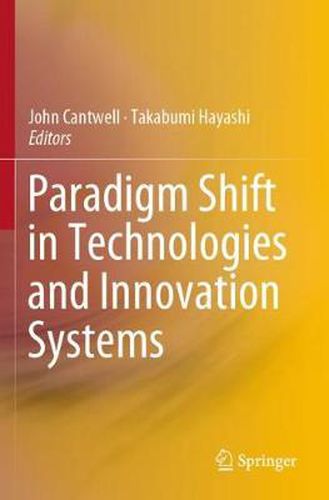Readings Newsletter
Become a Readings Member to make your shopping experience even easier.
Sign in or sign up for free!
You’re not far away from qualifying for FREE standard shipping within Australia
You’ve qualified for FREE standard shipping within Australia
The cart is loading…






This title is printed to order. This book may have been self-published. If so, we cannot guarantee the quality of the content. In the main most books will have gone through the editing process however some may not. We therefore suggest that you be aware of this before ordering this book. If in doubt check either the author or publisher’s details as we are unable to accept any returns unless they are faulty. Please contact us if you have any questions.
This book provides some new ideas on the conceptualization of a shift in technological paradigm, and it explores in depth the relevance of this concept for research on innovation systems. It examines text-mining software and analyzes patent data as well as academic and business journals to illustrate the paradigm shift of newly emerging technologies, such as the all-solid-state battery and automatic driving for electric vehicles, and surgical robots. It also explores the critical role of emerging software technologies by examining US, EU, and Japanese patent statistics.
Highlighting the paradigm shift of technologies since the 1990s and the geographical dispersion of innovative capabilities, it identifies essential trends toward new innovation systems as well as the concentration and dispersion of national and corporate R&D capabilities that have taken place as a result.
In this new paradigm, the competitiveness of a company is decisively determined by other innovations in systems and management. Since the 1990s, when a network economy began to be established and technological know-how came to be easily transferred across borders, the changing structure of technological activities has required organizations with traditional integral and closed architecture models to move toward open innovation or modular architectures. These changes involve wider technological areas and cognitive diversity among international inter-firm and intra-firm R&D networks.
This book is highly recommended not only to academicians but also to business people seeking an in-depth and up-to-date overview of the paradigm shift of technologies and new innovation systems.
$9.00 standard shipping within Australia
FREE standard shipping within Australia for orders over $100.00
Express & International shipping calculated at checkout
Stock availability can be subject to change without notice. We recommend calling the shop or contacting our online team to check availability of low stock items. Please see our Shopping Online page for more details.
This title is printed to order. This book may have been self-published. If so, we cannot guarantee the quality of the content. In the main most books will have gone through the editing process however some may not. We therefore suggest that you be aware of this before ordering this book. If in doubt check either the author or publisher’s details as we are unable to accept any returns unless they are faulty. Please contact us if you have any questions.
This book provides some new ideas on the conceptualization of a shift in technological paradigm, and it explores in depth the relevance of this concept for research on innovation systems. It examines text-mining software and analyzes patent data as well as academic and business journals to illustrate the paradigm shift of newly emerging technologies, such as the all-solid-state battery and automatic driving for electric vehicles, and surgical robots. It also explores the critical role of emerging software technologies by examining US, EU, and Japanese patent statistics.
Highlighting the paradigm shift of technologies since the 1990s and the geographical dispersion of innovative capabilities, it identifies essential trends toward new innovation systems as well as the concentration and dispersion of national and corporate R&D capabilities that have taken place as a result.
In this new paradigm, the competitiveness of a company is decisively determined by other innovations in systems and management. Since the 1990s, when a network economy began to be established and technological know-how came to be easily transferred across borders, the changing structure of technological activities has required organizations with traditional integral and closed architecture models to move toward open innovation or modular architectures. These changes involve wider technological areas and cognitive diversity among international inter-firm and intra-firm R&D networks.
This book is highly recommended not only to academicians but also to business people seeking an in-depth and up-to-date overview of the paradigm shift of technologies and new innovation systems.